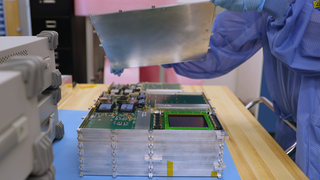ComPair Thermal Vacuum Photos
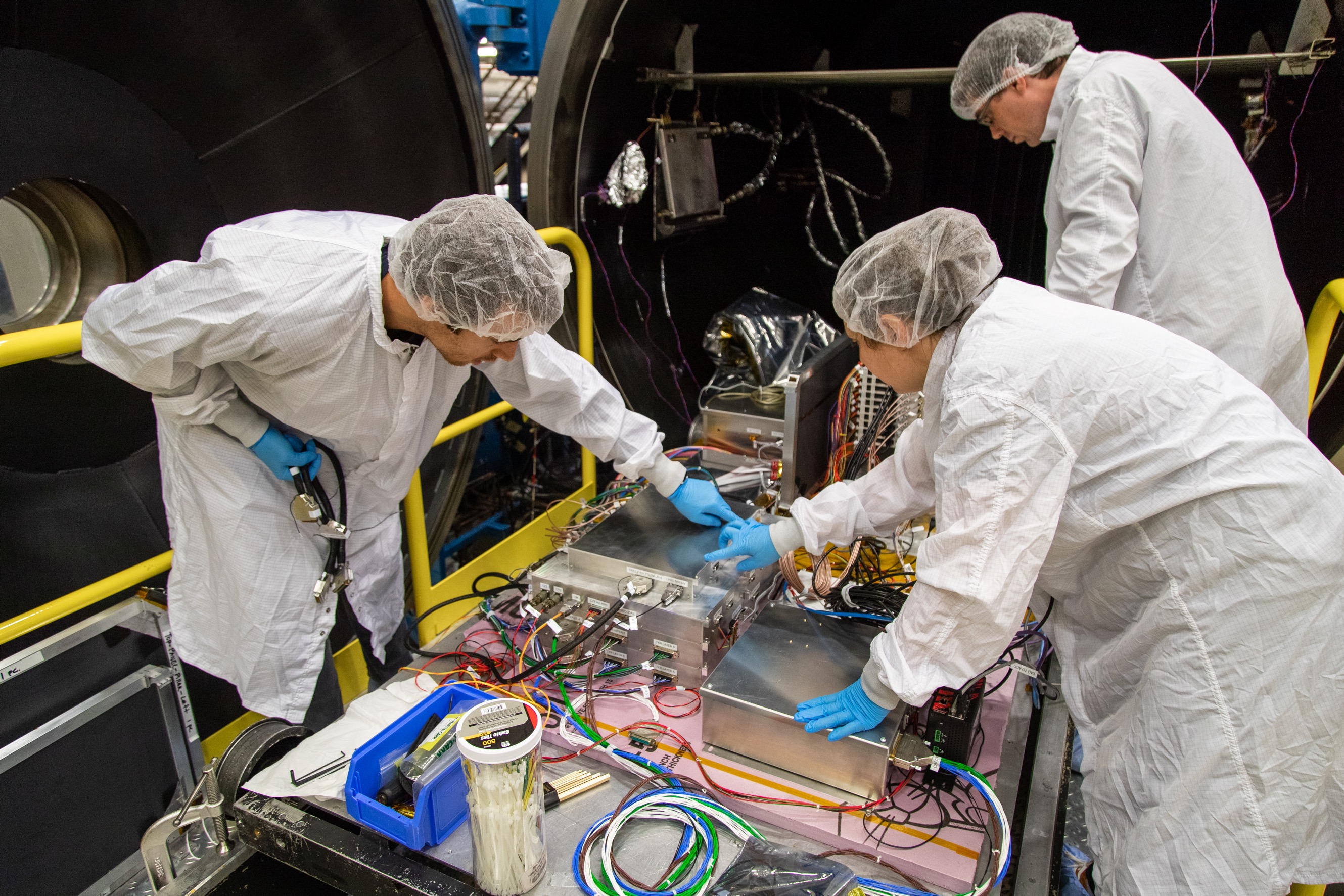
ComPair is designed to detect gamma rays with energies between 200,000 and 20 million electron volts. (For comparison, the energy of visible light is 2 to 3 electron volts.) Supernovae and gamma-ray bursts, the most powerful explosions in the cosmos, glow brightest in this range, as do the most massive and distant active galaxies, which are powered by supermassive black holes. Scientists know this because they see a fraction of the light emitted by these galaxies with NASA’s Fermi Gamma-ray Space Telescope, which observes higher-energy gamma rays.
The mission team assembled all the components and tested them in a large thermal vacuum chamber at NASA’s Goddard Space Flight Center in Greenbelt, Maryland, to assess how they function at balloon altitudes. The next step is to fly the instrument. The August flight will carry ComPair to about 133,000 feet (40,000 meters), or nearly four times the cruising altitude of a commercial airliner.
ComPair is a collaboration among Goddard, the Naval Research Laboratory in Washington, Brookhaven National Laboratory in Upton, New York, and Los Alamos National Laboratory in New Mexico.


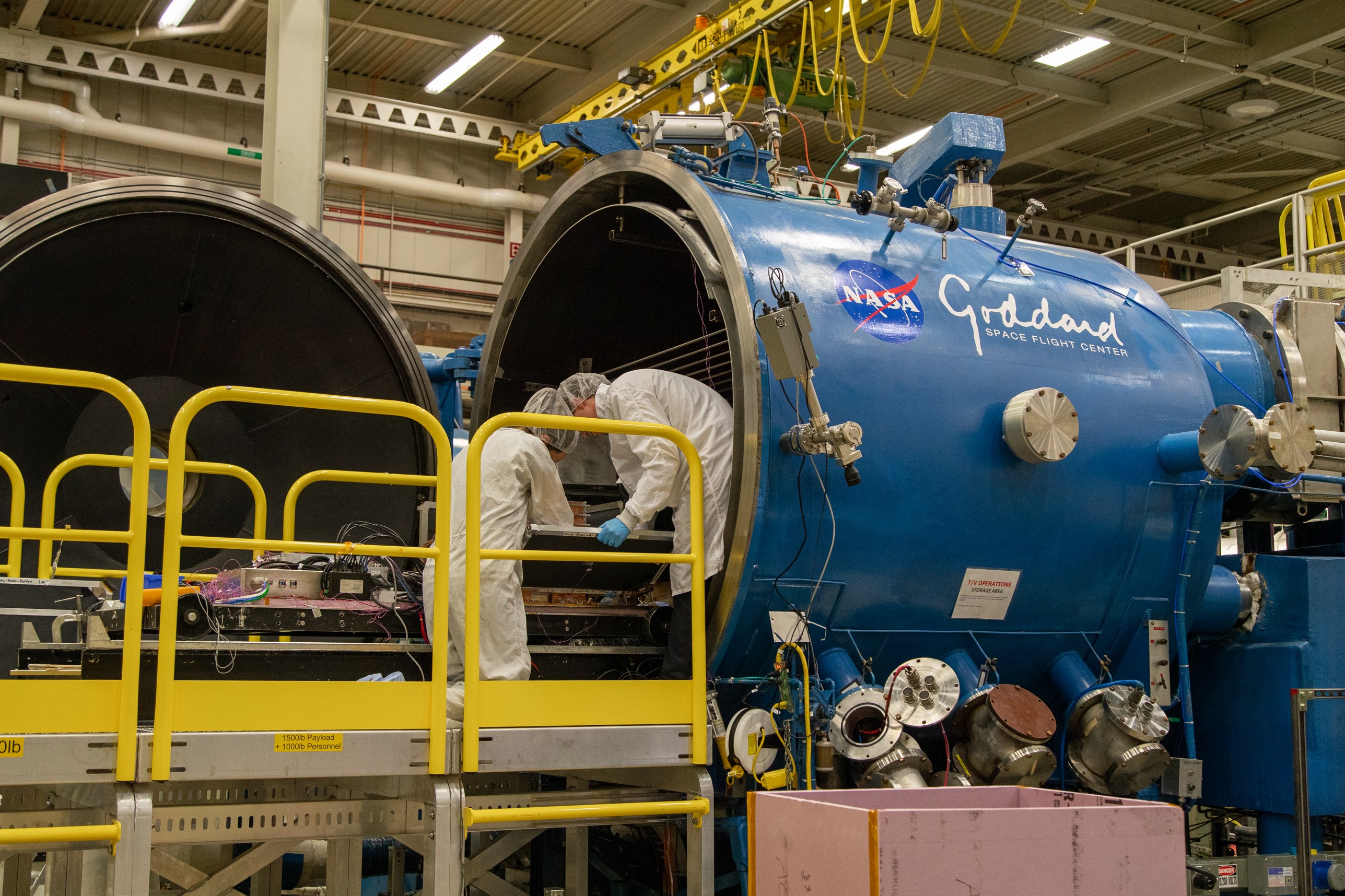


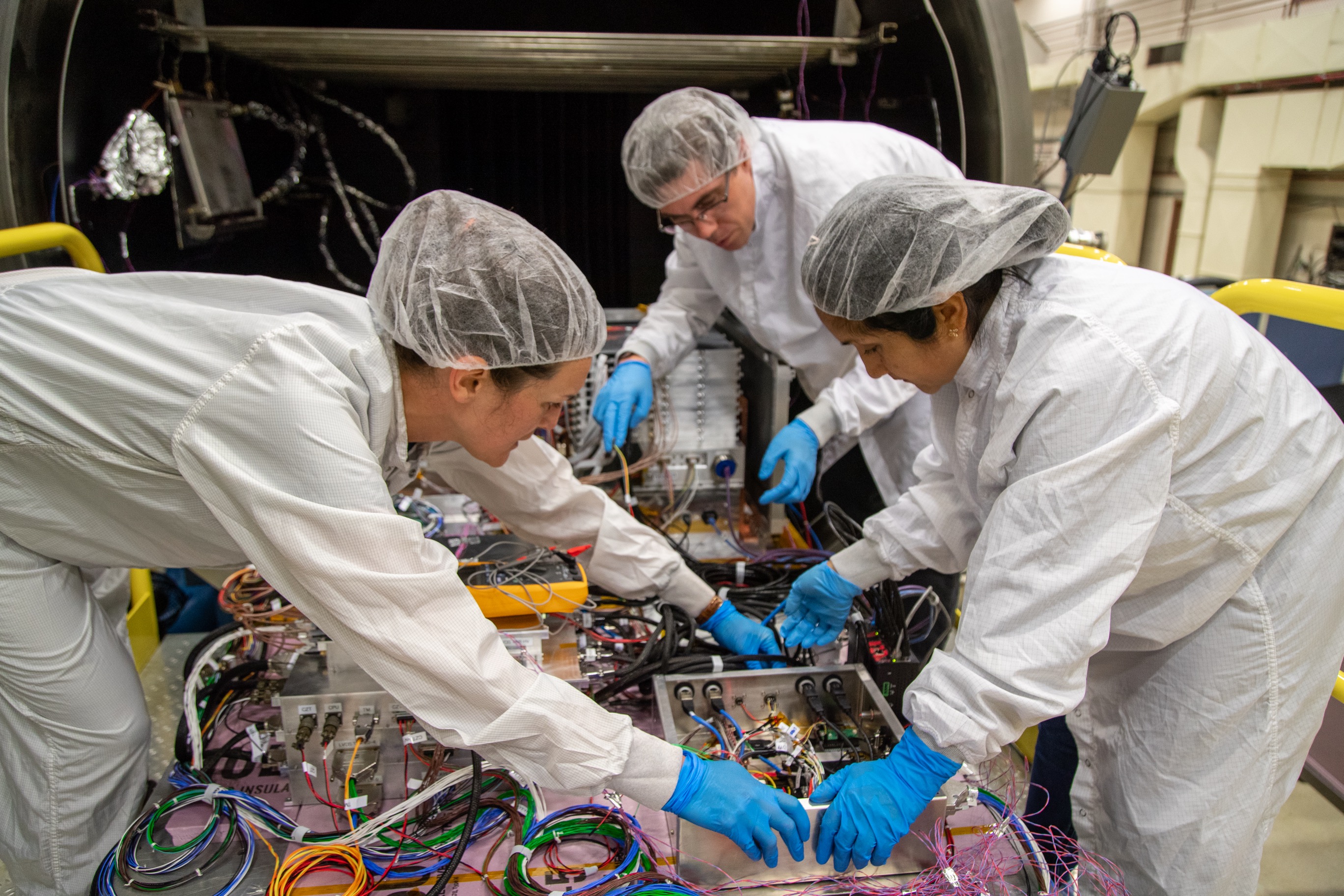



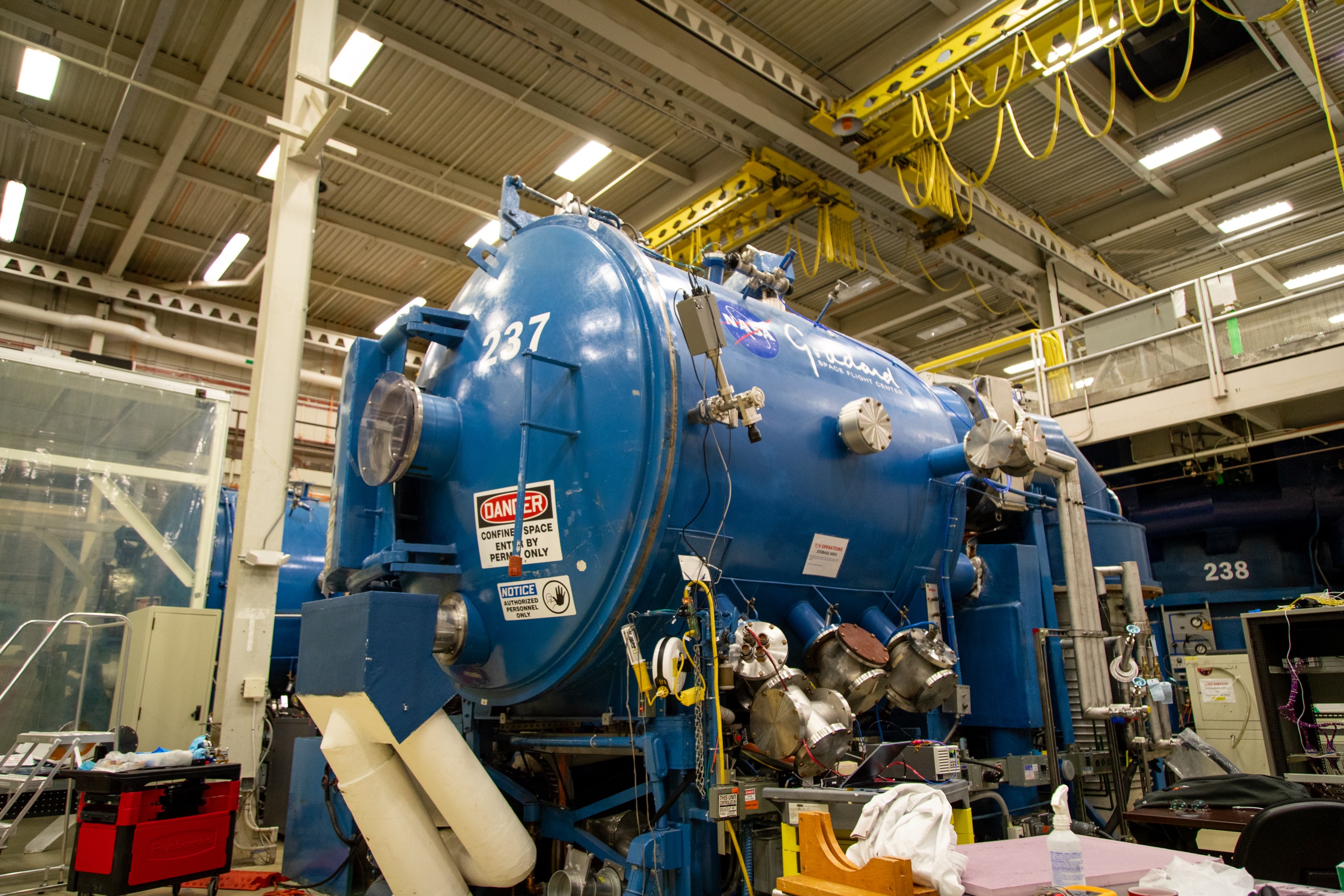
Related
Credits
Scott Wiessinger (KBR Wyle Services, LLC): Photographer
Jeanette Kazmierczak (University of Maryland College Park): Science Writer
NASA's Goddard Space Flight Center
https://svs.gsfc.nasa.gov/14372
This item is part of these series:
Astrophysics Stills
Astrophysics B-Roll
Keywords:
SVS >> HDTV
SVS >> Astrophysics
SVS >> Testing
SVS >> B-Roll
NASA Science >> Universe
SVS >> Balloon
SVS >> Thermal Vacuum Chamber
SVS >> Gamma Ray

